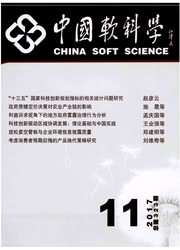
欢迎您!东篱公司
退出

 中文摘要:
中文摘要:
本文利用微观经济学的基本工具分析了专利的资源配置效率,指出专利制度是通过赋予专利持有者市场垄断力量的方式对专利所有者的投入进行补偿,但垄断又必然会导致社会成本的增加,因而决定了专利制度不是最优的资源配置方式。但是,通过根据不同情况而构建不同的最优专利组合(专利长度和宽度的组合)来平衡社会收益与私人的收益,可以提高专利制度的效率,这一点对于专利制度的设计具有重要的意义。
 英文摘要:
英文摘要:
Using the basic tools of microeconomics, the article investigates the resources allocation efficiency of patent system, and points out that patent system is aimed to provide rewards to inventors by creating market monopolizing power which necessitates some welfare loss. Despite that patent system isnt the best way of resources allocation, one can construct optimal combination of patent length and breadth according to different conditions, so as to enhance the efficiency of patent system, which has an important implication for the design of patent system.
 同期刊论文项目
同期刊论文项目
 同项目期刊论文
同项目期刊论文
 期刊信息
期刊信息
